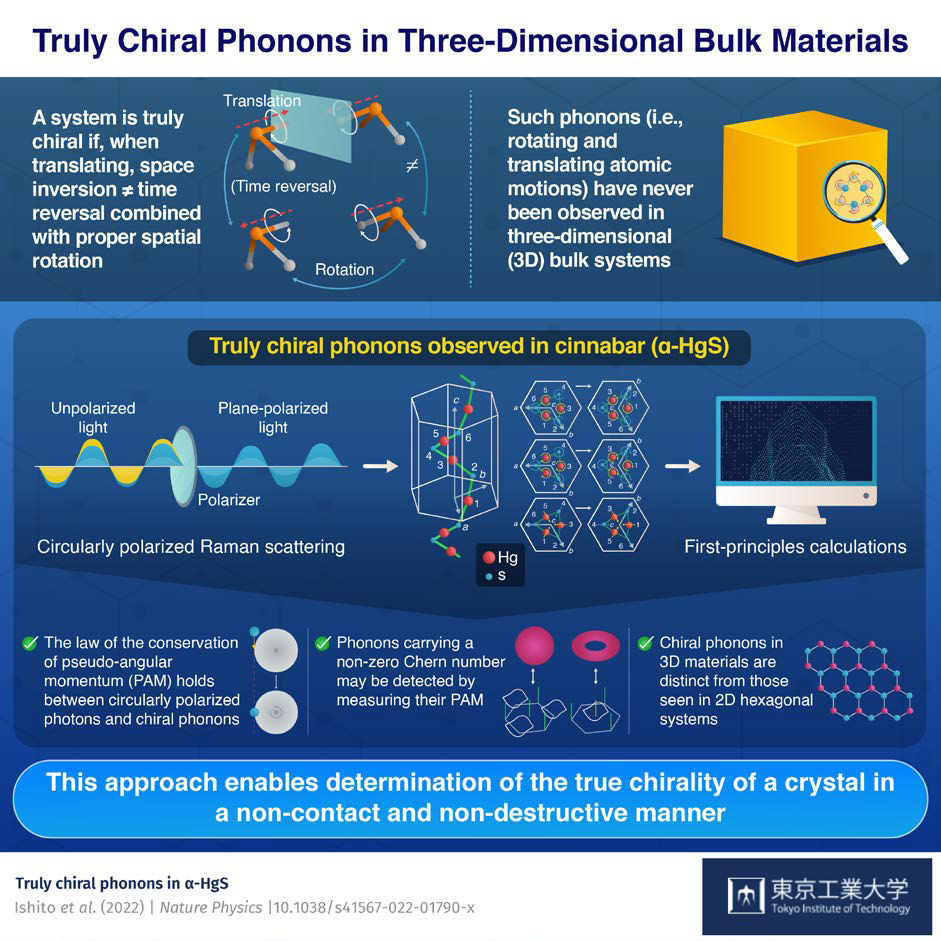News FY 2022
35th AAOU Annual Conference in Jeju, Korea
Hosted by Korea National Open University, the 35th Annual Conference of the Asian Association of Open Universities (AAOU) was held at the International Convention Center in Jeju, Korea on November 2–4, 2022. About 240 university officials and educational experts in the field of open and distance learning from 24 countries participated in the conference.
From OUJ, President Masaya Iwanaga and Vice President Masahiro Kumabe attended the AAOU Executive Committee Meeting, and papers were presented by Professor Takako Nakatani, Professor Noriko Sekine, and Professor Tsuneo Yamada.
The main theme for this year was "Opening a New Path to Open Universities: Responding to Global Issues," and the topics of some presentations included how open universities should reposition in the post-COVID-19 era.
Professor Nakatani made a presentation on "The IBT trials for 200,000 examinations," reporting on a case study of Internet-Based Testing (IBT) introduced at OUJ in 2022. She focused particularly on various innovative efforts to reduce the server load and demonstrated the results with quantitative data. She was awarded a Gold Medal in the AAOU Best Practice Awards.

Professor Sekine gave a presentation on "Impact of the COVID-19 pandemic on learning awareness among students enrolled at the Open University of Japan." She presented the results of a student survey conducted in the summer of 2021 and winter of 2022 as part of a research project by the OUJ Research Institute for Learning and Education Strategies, regarding changes in students' motivation for learning and satisfaction with OUJ.
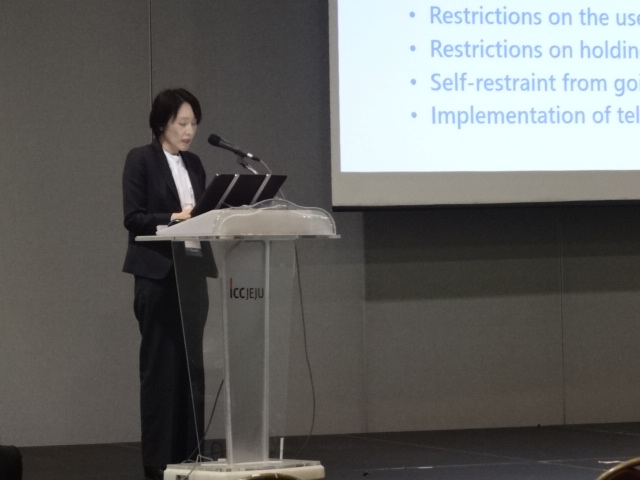
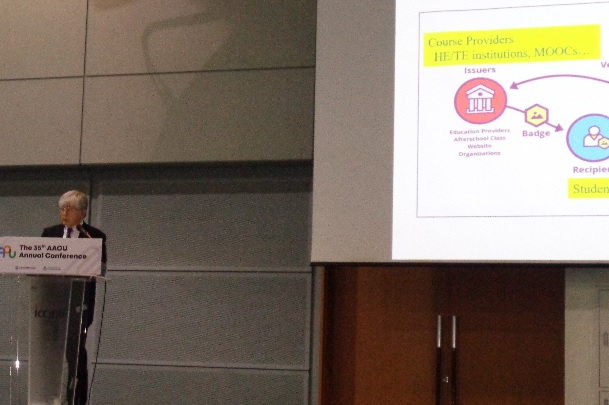
Professor Yamada delivered a presentation on "Implementation of a digital credential ecosystem for informal education at the Open University of Japan." The implementation team developed a proof of concept (POC) model for e-transcripts, in which privacy data can be protected with a Comprehensive Learner Record (CLR) technical standard developed by the 1EdTech Consortium. By using a CLR platform, the team examined the effectiveness of learning pathway functions in the personal CLR wallet. Professor Yamada also contributed as a section chair.
At the General Body Meeting, elections were held to elect the next AAOU President and members of the AAOU Executive Committee for CY2023–2025. The President of OUJ was re-elected as an AAOU Executive Committee member.
The 36th AAOU Annual Conference will be hosted by Turkey’s Anadolu University from September 28 to 30, 2023 in Istanbul.
Through its participation in AAOU, OUJ will continue to cooperate with overseas distance education institutions and promote international exchange.
Paper by President Masaya Iwanaga and Professor Tsuneo Yamada Published on AAOU Website
A collection of papers on “Open and Distance Education in Asia" has been published by the Asian Association of Open Universities (AAOU) and is now available on the AAOU website.
From OUJ, President Masaya Iwanaga and Professor Tsuneo Yamada wrote a chapter titled "Distance Education for Higher Education and Lifelong Learning in Japan".

In addition to OUJ, the following AAOU members contributed: Korea National Open University, Open University Malaysia, Sukhothai Thammathirat Open University (Thailand), the Open University of China, the Open University of Sri Lanka, University of the Philippines Open University, and Universitas Terbuka (Indonesia).
Delegation from Korea National Open University
On November 11 and 15, a delegation consisting of Ms. Hyunju Jang and five technical production staff from the Digital Media Center of Korea National Open University (KNOU) visited OUJ on an overseas training program.
The visitors arrived at the Makuhari headquarters of OUJ on the morning of November 11. Vice President Masahiro Kumabe gave an overview of OUJ’s courses and program outlines in response to questions KNOU members had sent in advance.
The delegation toured studios related to online class subjects guided by Mr. Hajime Kudo, Director Head of the Online Education Division. They also toured the master control room and studio guided by Mr. Hiroki Ogawa, Deputy Director of Department Production, and Mr. Kazuhiro Kawahata, Deputy Head of the Broadcast Engineering and Operating Division. They observed each facility with great enthusiasm, and the tour was followed by a lively question-and-answer session about equipment and program recording.
During the lunch meeting, President Masaya Iwanaga joined the group to exchange various information on initiatives of the two universities, including learning material delivery systems.
In the afternoon, the delegation visited the Chiba Study Center, where it toured lecture rooms, laboratories, and other facilities under the guidance of the General Manager, Mr. Toshinori Shikakura.
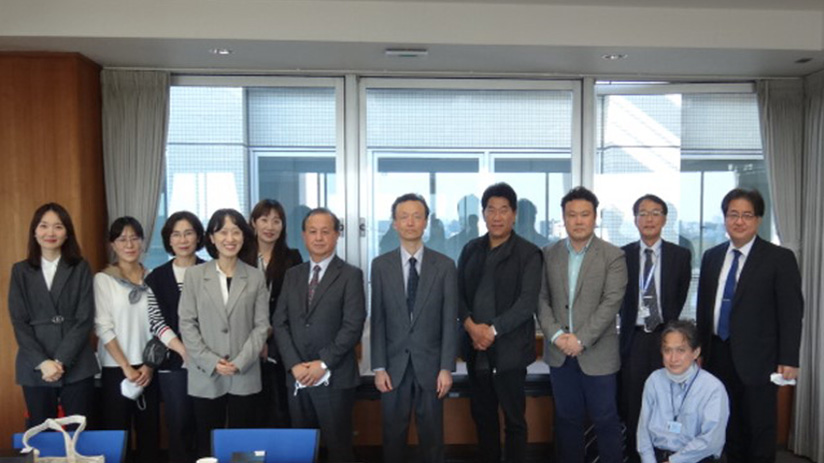
On the same day, the delegates visited the Tokyo Bunkyo Study Center, where they toured the facilities and observed a face-to-face course session under the guidance of the General Manager, Mr. Takashi Anse. They learned about the uses of the facilities and equipment and the roles of Study Centers.
On the 15th, the delegation visited the Hokkaido Study Center guided by its General Manager, Ms. Rie Sanbuichi.
We hope that this visit will further deepen the relationship between our two universities and lead to substantive exchanges in the future.
OUJ Delegates Participate in the 80th Anniversary Conference of the National University of Mongolia (NUM)
From October 4 to 6, 2022, an OUJ delegation consisting of Professor Tsuneo Yamada, Advisor to the OUJ President and Chair of the International Exchange Committee, Professor Yumiko Nara, and Ms. Mai Tanaka, Deputy Head of the General Affairs Division, participated in the NUM 80th anniversary celebration conference.
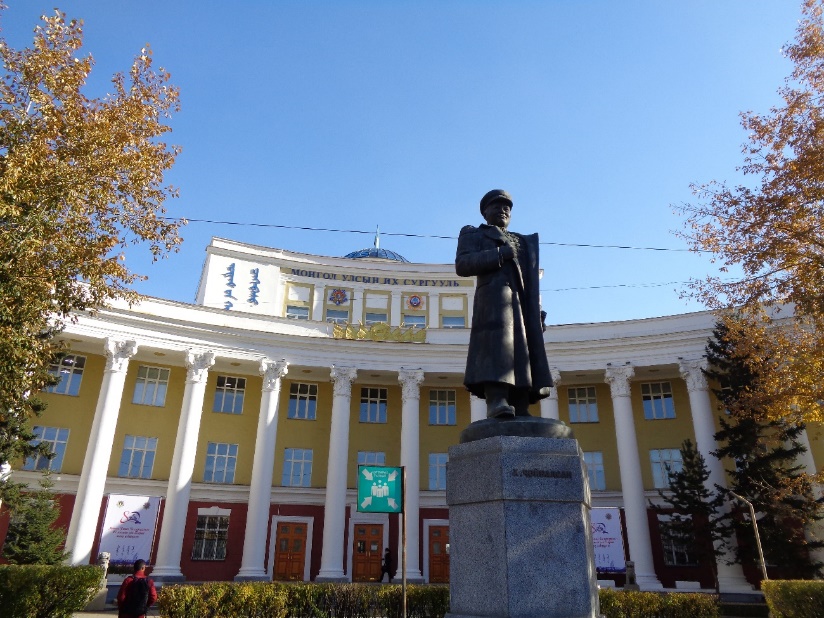
NUM was established in 1942 as the first institution of higher education in Mongolia. It has contributed to the foundation of the higher education system in Mongolia by establishing six colleges. In recent years, the university has also been promoting distance education.
In October 2019, OUJ and NUM signed a memorandum of understanding (MOU) on cooperation in joint research, exchange of faculty and staff, and collaborative development and sharing of teaching materials.
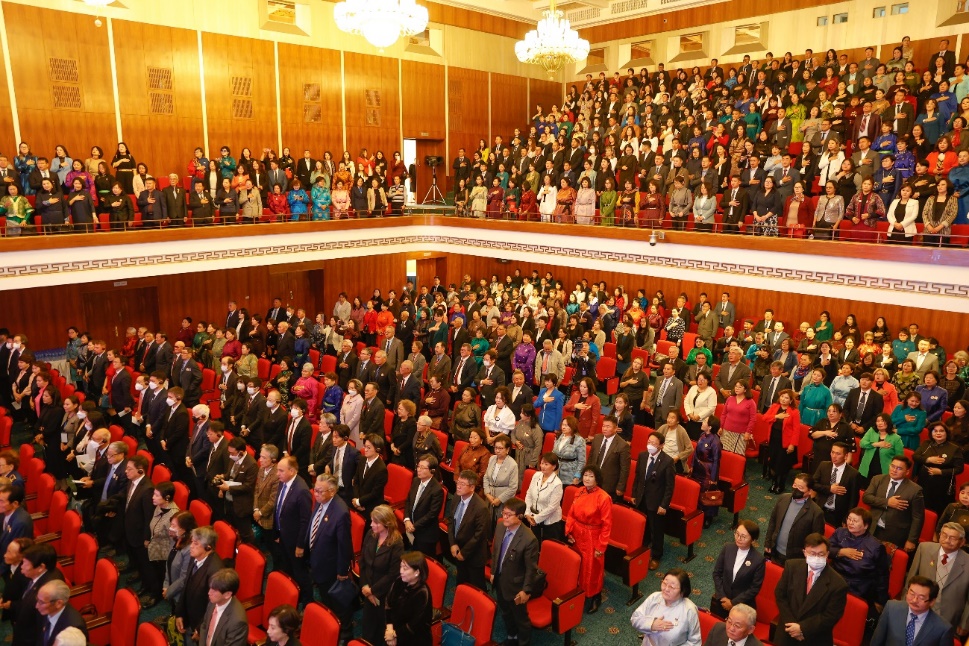
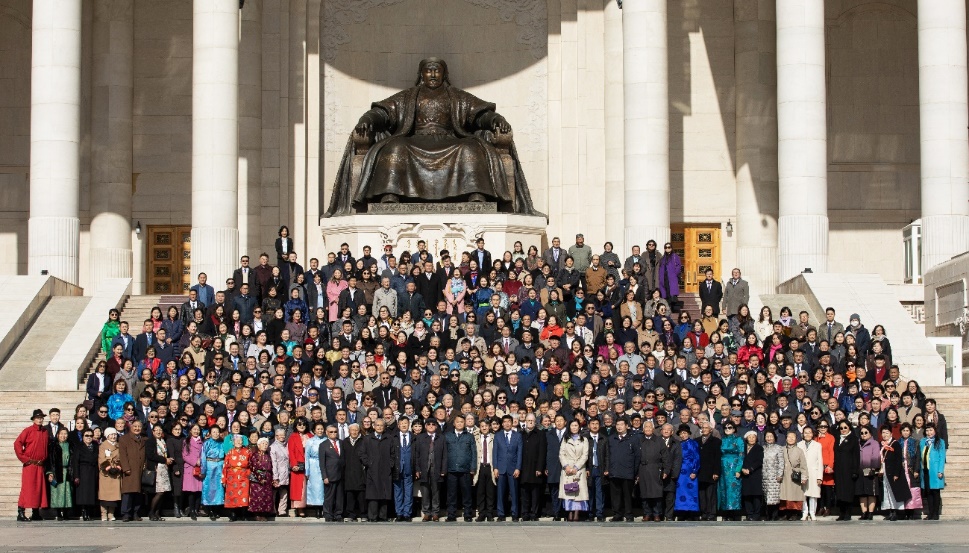
A ceremony was held on October 5 at Parliament House in Ulaanbaatar, Mongolia, in the presence of the university's faculty, staff, alumni, and administrators, as well as representatives of international institutions. Cooperative and international partners participated in the NUM anniversary conference and commemorative activities and took part in a wide-ranging program to learn about the history, traditions, and cultural heritage of Mongolia.
We expect that our two universities will continue to cooperate, engage in further active exchanges, and evolve with each other.
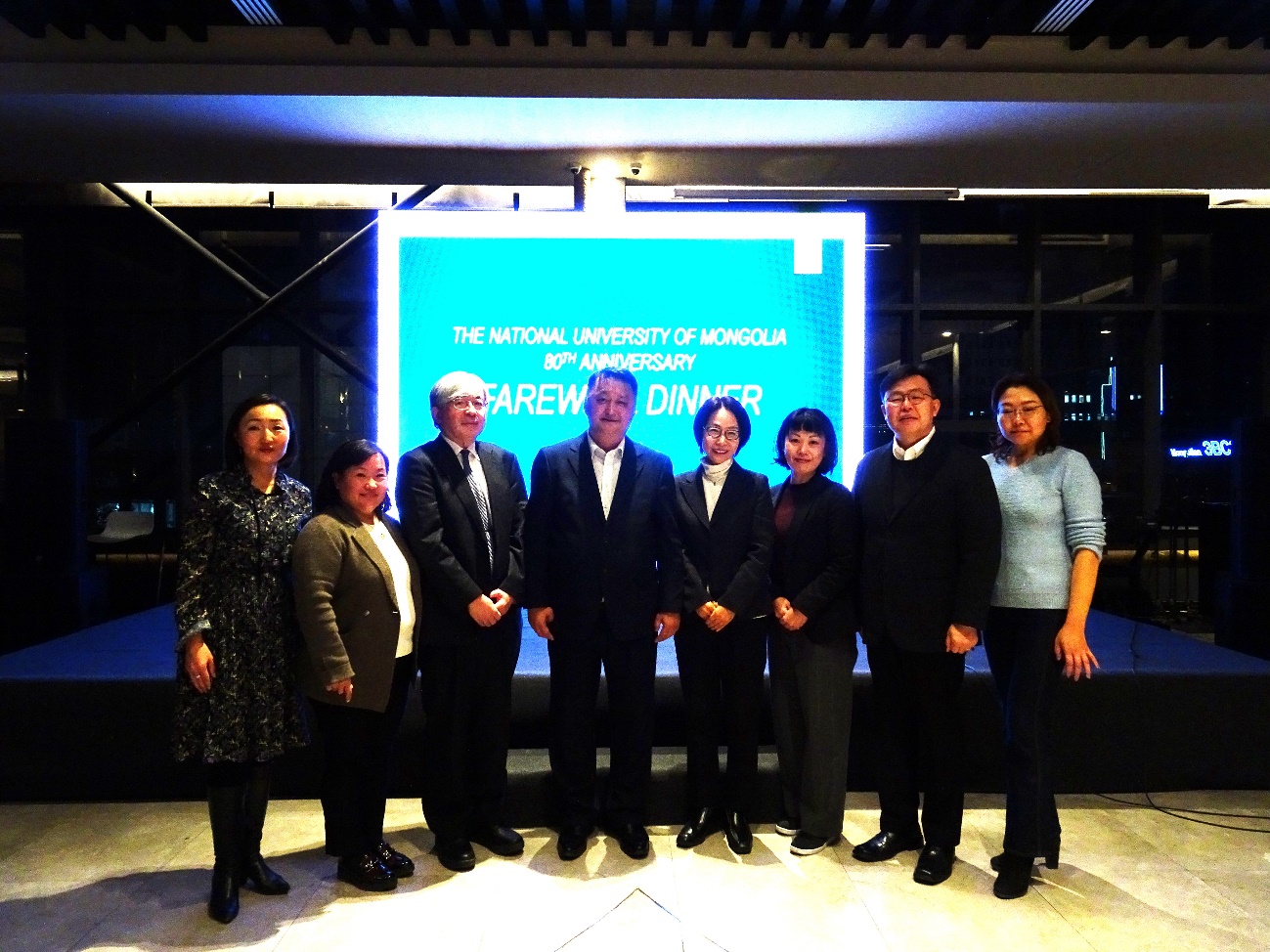
Professor Tsuneo Yamada (third from left), Professor Yumiko Nara (fourth from right), and Ms. Mai Tanaka (third from right)
PRESS RELEASE
Source: Tokyo Institute of Technology, The Open University of Japan, Osaka Metropolitan University
November 18, 2022
Truly Chiral Phonons Observed in Three-Dimensional Materials for the First Time
Chirality can be true or false, depending on the symmetry of dynamic propagation. Crystal lattice vibrations, called phonons, can also display chirality as has been shown in some two-dimensional structures. However, truly chiral phonons have never been observed in three-dimensional systems—that is, until now. Researchers from Tokyo Tech have identified these for the first time, in bulk cinnabar. Utilizing pseudo-angular momentum, their method can be used to identify the chirality in crystalline structures.
Chirality is the breaking of reflection and inversion symmetries. Simply put, it is when an object’s mirror images cannot be superimposed over each other. A common example are your two hands—while mirror images of each other, they can never overlap. Chirality appears at all levels in nature and is ubiquitous. In addition to static chirality, chirality can also occur due to dynamic motion including rotation. With this in mind, we can distinguish true and false chirality. A system is truly chiral if, when translating, space inversion does not equate to time reversal combined with a proper spatial rotation.
Phonons are quanta (or small packets) of energy associated with the vibration of atoms in a crystal lattice. Recently, phonons with chiral properties have been theorized and experimentally discovered in two-dimensional (2D) materials such as tungsten diselenide. The discovered chiral phonons are rotating—yet not propagating—atomic motions. But, truly chiral phonons would be atomic motions that are both rotating and propagating, and these have never been observed in three-dimensional (3D) bulk systems.
Now, a team of researchers led by scientists from Tokyo Institute of Technology (Tokyo Tech) have identified truly chiral phonons, both theoretically and experimentally. The team, led by Professor Takuya Satoh of the Department of Physics at Tokyo Tech, observed the chiral phonons in cinnabar (α-HgS). This was achieved using a combination of first-principles calculations and an experimental technique called circularly polarized Raman scattering. “Chiral structures can be probed using chiral techniques. So, using circularly polarized light, which has its own handedness (i.e., right-handed or left-handedness), is critical. Dynamic chiral structures can be mapped using pseudo-angular momentum (PAM). Pseudo-momentum and PAM originate from the phase factors acquired by discrete translation and rotation symmetry operations, respectively,” explains Professor Satoh.
The researchers’ novel experimental approach also allowed them to probe the fundamental traits of PAM. They found that the law of the conservation of PAM—one of the key laws ofphysics—holds between circularly polarized photons and chiral phonons. “Our work also provides an optical method to identify the handedness of chiral materials using PAM. Namely, we can determine the handedness of materials with better resolution than x-ray diffraction (XRD) can achieve. Moreover, XRD requires a large-enough crystal, is invasive, and can be destructive. Circularly polarized Raman scattering, on the other hand, allowed us to determine the chirality of structures XRD could not, in a non-contact and non-destructive manner,” concludes Professor Satoh.
This study is the first to identify truly chiral phonons in 3D materials, which are clearly distinct from those seen previously in 2D hexagonal systems. The learnings gained here could drive new research into developing ways for transferring the PAM from photons to electron spins via propagating chiral phonons in future devices. Furthermore, this approach enables the determination of the true chirality of a crystal in an improved manner, providing a new critical tool for experimentalists’ and researchers.
Reference
Authors:
Kyosuke Ishito1, Huiling Mao1, Yusuke Kousaka2,3, Yoshihiko Togawa2, Satoshi Iwasaki3, Tiantian Zhang1,4, Shuichi Murakami1,4, Jun-ichiro Kishine5,6 and Takuya Satoh1
Title of original paper:
Truly chiral phonons in α-HgS
Journal:
Nature Physics
DOI:
10.1038/s41567-022-01790-x
Affiliations:
- Department of Physics, Tokyo Institute of Technology, Tokyo, Japan
- Department of Physics and Electronics, Osaka Metropolitan University, Osaka, Japan
- Research Institute for Interdisciplinary Science, Okayama University, Okayama, Japan
- Tokodai Institute for Element Strategy (TIES), Tokyo Institute of Technology, Tokyo, Japan
- Division of Natural and Environmental Sciences, The Open University of Japan, Chiba, Japan
- Institute for Molecular Science, Okazaki, Japan
*Corresponding author’s email: satoh@phys.titech.ac.jp
Contact
Kazuhide Hasegawa
Public Relations Division,
Tokyo Institute of Technology
media@jim.titech.ac.jp
+81-3-5734-2975
